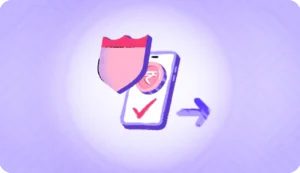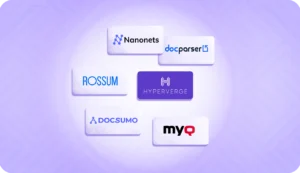Suppose you’re running a booming e-commerce business. Transactions are flying in, and everything seems perfect—until a fraudulent payment slips through. Suddenly, you’re dealing with financial loss, regulatory headaches, and a dent in your customers’ trust. It’s a nightmare no business wants to face, but it’s a reality many encounter.
Payment screening is your first line of defense, blocking fraudulent actors and ensuring compliance to minimize risk and protect your customers.
Let’s examine how this powerful process works, why it’s become indispensable, and how you can use it to safeguard your business and customers.
The evolving landscape of payment fraud
According to a 2023 report from a leading financial institution, 80% of organizations reported being targets of payment fraud.
This alarming trend underscores the evolving tactics of fraudsters and the pressing need for businesses to fortify their defenses against payment fraud.
The Rise of Digital Payments
As the world shifts towards cashless transactions, digital payments have become the backbone of modern commerce. From mobile wallets to instant payment systems, their convenience is undeniable. However, this growing reliance on digital payment platforms has also opened doors to fraudsters.
The sheer volume of transactions—projected to reach US$20.37tn in 2025—creates countless opportunities for malicious actors to exploit weak points in payment systems.
Sophisticated Fraud Techniques
Fraudsters today employ far more advanced methods than ever before. Some of the most common techniques include:
- Synthetic identities: Fraudsters mix real and fake information to create identities that bypass basic account verification systems.
- Account takeovers: Hackers infiltrate user accounts to access stored payment information or perform unauthorized transactions.
- Card-present fraud: Criminals use counterfeit or stolen cards for in-person transactions that are harder to flag as fraudulent.
The Need for Proactive Measures
As fraud becomes more sophisticated, reactive strategies are no longer enough. Businesses must adopt proactive measures to combat these threats, such as implementing robust payment screening systems and enhancing compliance with AML and KYC regulations.
Fintech identity verification allows businesses to securely onboard customers while keeping fraudulent activities at bay.
Related read: AML requirements for payment processors
Understanding payment screening: a multifaceted approach
Payment screening works to identify potentially fraudulent transactions before they’re processed. It’s a real-time analysis of customer transactions to detect and prevent suspicious transactions from being processed. It compares various aspects of the transaction, such as location, transaction amount, and background information of the sender and receiver, against distinct data points to verify the legitimacy of a financial transaction.
Let’s explore the four key components of a comprehensive payment screening strategy.
Watchlist screening
Screening transactions against sanctions lists, Politically Exposed Persons (PEP) lists, and other such databases is a cornerstone of payment security. Regulators mandate it to prevent illegal activities such as money laundering and terrorist financing.
Key benefits of watchlist screening include:
- Blocking transactions from sanctioned individuals or entities.
- Reducing the risk of hefty regulatory fines for non-compliance.
- Enhancing global reputation by adhering to Anti-Money Laundering (AML) regulations.
Negative news screening
Imagine onboarding a client only to find out later they’ve been linked to fraud or other criminal activities. Negative news screening addresses this by monitoring adverse media coverage about individuals or organizations involved in transactions.
Why it matters:
- Identifies potential risks that may not appear on official watchlists.
- Provides a proactive way to assess client or vendor credibility.
- Prevents reputational damage caused by associating with high-risk entities.
Transaction pattern analysis
Fraud isn’t always obvious—it often hides in patterns. AI-powered transaction pattern analysis uses algorithms to detect anomalies and suspicious activity that might signal fraud. It flags unusual transaction amounts, locations, or frequencies and identifies patterns indicative of money laundering or fraud.
This helps protect against synthetic fraud, as AI can cross-check transaction patterns with trusted data sources such as bank account verification.
Device fingerprinting
Device fingerprinting collects and analyzes information about the devices used to initiate transactions. It examines aspects such as IP address, browser type, operating system, and hardware configuration to identify patterns associated with fraudulent activity. Such screening helps businesses detect sophisticated forms of financial crime, such as identity theft and click fraud.
Now, let’s understand how technology helps with payment screening.
The role of technology in payment screening
Technology is the backbone of modern transaction screening strategies, enabling businesses to detect and prevent fraud more accurately and efficiently. With evolving threats, relying on outdated methods is no longer sufficient.
Let’s explore technological innovations that are reshaping payment screening.
AI and machine learning
Artificial Intelligence (AI) and Machine Learning (ML) have transformed the payment screening process by introducing the ability to learn, adapt, and improve over time. These technologies analyze vast datasets to identify subtle fraud patterns that manual methods might overlook.
Advantages of AI and ML in payment screening:
- Detect emerging fraud trends by analyzing historical and real-time data.
- Minimize false positives, allowing businesses to focus on genuine threats.
- Continuously improve as fraudsters evolve their techniques.
Real-time risk assessment
Real-time risk assessment enables businesses to act on potential threats immediately, reducing financial loss and reputational damage. This technology evaluates transaction data as it happens, assigning risk scores based on various factors.
Cloud-based solutions
Cloud-based payment screening solutions are gaining popularity for their scalability, flexibility, and cost-effectiveness. These solutions allow even small businesses to adapt quickly to changing fraud patterns without heavy infrastructure investments.
Why choose cloud-based solutions:
- Easily scale to accommodate growing transaction volumes.
- Provide remote access for global teams to monitor and manage fraud prevention.
- Reduce maintenance costs compared to on-premise systems.
API Integration
APIs (Application Programming Interfaces) enable businesses to connect screening tools with their payment platforms, ensuring smooth workflows. They allow for real-time data exchange for faster fraud detection and streamline compliance processes by consolidating multiple tools into a unified system.
Advanced payment screening techniques
Traditional security measures for fraud prevention are no longer sufficient. From verifying the customer’s identity to analyzing transaction data and behavior patterns, businesses need advanced screening techniques to avoid evolving threats.
Let’s understand what goes into screening a customer’s financial transactions.
Biometric authentication
Over half of financial services fraud is categorized as identity fraud. Biometric authentication uses unique physical or behavioral characteristics, such as fingerprints or facial recognition, to verify identities. It’s a powerful tool for preventing unauthorized access and fraudulent transactions.
Biometric data is already complex to replicate or mimic. Advanced AI tools make it impossible for even the best fraudster to impersonate someone.
Combining biometrics with instant bank account verification creates a robust layer of security for your payment systems.
Streamline your end-to-end KYC Processes
With Hyperverge’s Digital Identity verification Schedule a DemoBehavioral analytics
Fraudsters may be able to forge credentials but often fail to mimic natural customer behavior. To detect anomalies, behavioral analytics tracks patterns such as typing speed, navigation habits, and purchasing behavior.
How it helps:
- Flags activity that deviates from established customer norms.
- Identifies subtle signs of account takeover or synthetic identity fraud.
- Operates in the background, ensuring a frictionless user experience.
Network graph analysis
Network graph analysis visualizes relationships between entities, such as accounts, devices, and transactions, to identify suspicious connections.
Use cases:
- Detects hidden links between fraudulent entities.
- Identifies money-laundering networks by analyzing transaction flows.
- Provides actionable insights for fraud investigators.
The benefits of effective payment screening
Even if your business isn’t legally required to practice payment screening, the benefits of screening are far too many to ignore.
Enhanced compliance
Payment screening ensures adherence to regulations like Anti-Money Laundering (AML) and Know Your Customer (KYC). This not only avoids penalties but also demonstrates a commitment to ethical practices.
Reduced financial losses
Fraudulent transactions result in direct financial losses and additional costs, such as chargeback fees. Of those organizations that were victims of payment fraud in 2023, 30% could not recover the lost funds. Robust screening tools minimize these risks, saving businesses money in the long run.
Improved customer experience
Customers who know their payments are secure are more likely to trust your business. Seamless and secure payment experiences also reduce friction, boosting satisfaction and loyalty.
Strengthened brand reputation
A reputation for strong payment security can set a business apart in competitive markets. It signals to customers and partners that you prioritize their safety and value their trust.
Hyperverge: your partner in payment security
Payment screening is supposed to be effortless, especially with Hyperverge.
Hyperverge’s comprehensive payment screening solutions can verify identities and detect forged documents by running them against vast databases. Our offerings include:
- Real-time transaction monitoring to detect suspicious activity.
- AI-powered algorithms for accurate risk assessment.
- Seamless API integration for effortless adoption.
- Advanced biometric and behavioral analytics to combat fraud.
Hyperverge seamlessly integrates with the existing workflows, making your screening process efficient and cost-effective.
Your roadmap to safer transactions in 2025
The stakes are high when it comes to payment security. Payment screening has become a critical safeguard in today’s digital landscape, protecting businesses and customers from evolving fraud tactics.
As fraud techniques become more sophisticated, investing in robust payment screening processes is necessary. Prioritizing secure and seamless payment experiences strengthens your defenses and enhances your reputation in a competitive market.
Looking ahead, technologies like behavioral analytics and network graph analysis will further transform payment security, making it essential to stay proactive and adaptable.
FAQs
1. What is the meaning of payment screening?
Payment screening evaluates payment transactions before they are processed to ensure they do not involve fraudulent activity or violate regulations. This includes checking transactions against watchlists and sanctions lists and monitoring for signs of money laundering, fraud, or other illicit activities. The goal is to prevent financial crimes and ensure compliance with legal requirements.
2. What are the roles and responsibilities of payment screening?
Payment screening entails the following roles and responsibilities:
- Identifying suspicious activity
- Verifying customer identity
- Screening against watchlists
- Complying with regulations
- Protecting financial assets
3. What is the difference between payment screening and transaction monitoring?
Payment screening focuses on checking transactions before they are processed, blocking high-risk ones based on watchlists and fraud indicators. Transaction monitoring continuously analyzes transaction patterns to detect suspicious activities after they occur. Both are crucial, but payment screening is proactive, while transaction monitoring is reactive.





